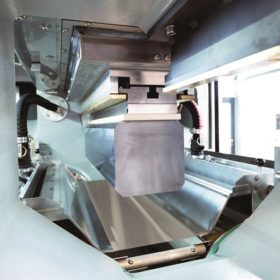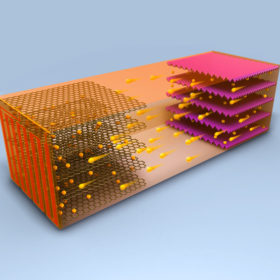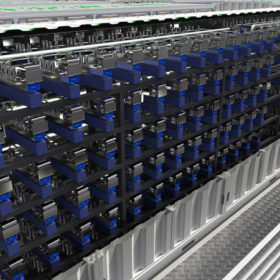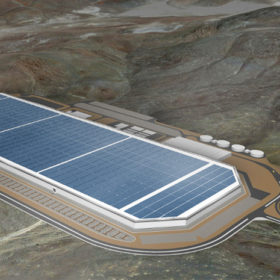U.S. researchers put slimmer silicon back on the table
With solar grade polysilicon prices having plummeted in recent years, cutting down on consumption of the material has not been a priority. But strategies exist and significant savings can be made through deploying thinner wafers that use less silicon, insists a new paper published by MIT and NREL. And as manufacturers are increasingly hitting dead ends on other routes to cost reduction, this option could be back on the table for many.
Solar cells from space are on the way
A team at the U.S. National Renewable Energy Laboratory has come up with a new process that would reduce the production cost of highly expensive – and highly efficient – gallium arsenide cells.
Charging an electric vehicle in 10 minutes
Scientists from Penn State University have developed a self-heating battery for electric vehicles which is said charge in only 10 minutes at 60 degrees Celsius.
Elon Musk calls for an ‘immediate’ and ‘significant increase’ in Tesla’s solar installs
Tesla was once the unquestioned leader in the residential rooftop market with a market share of around 33 percent, but today, the company is No. 3, and its market share during the first quarter was a little more than 6 percent.
Greentech raises funds for greenhouse gas-to-hydrogen investment, eyes $100m Australian opportunity
California-based Greentech startup ReCarbon, which recycles greenhouse gases by converting them into hydrogen, is targeting a big Australian investment.
Divide and conquer, Tesla’s electric Cybertruck breaks into ute-market
Tesla’s new electric ute, the Cybertruck, may not be the most beautiful of vehicles, but that doesn’t seem to have cost it any attention. The unveiling almost broke the Internet, and a couple windows really did break in the process.
Saving water with solar and wind
Scientists at Princeton have found solar and wind energy offer the added environmental benefit of reducing water usage, by comparison with hydroelectric dams. Their findings, say the researchers, could have a positive impact on groundwater sustainability in drought-prone regions such as California, where they conducted a case study.
Tritium expands to Europe and the U.S.
Brisbane-based Tritium is quickly becoming a world leader in EV charging technology as the company rapidly expands across Europe and the United States.
Tesla unveils a bigger, better, simpler Solar Roof – at a 40% discount
Elon Musk has officially launched the third phase of his crusade to make a successful solar roof tile, with promises that this time it is going to be a success.
PV against cancer
Research from the United States has demonstrated how PV technology can be used to kill cancer cells. Although still at an embryonic stage, the findings of the study and initial test results suggest solar power could be an effective tool in relation to light-activated fluorescent dyes for disease diagnosis, image-guided surgery and site-specific tumor treatment.















